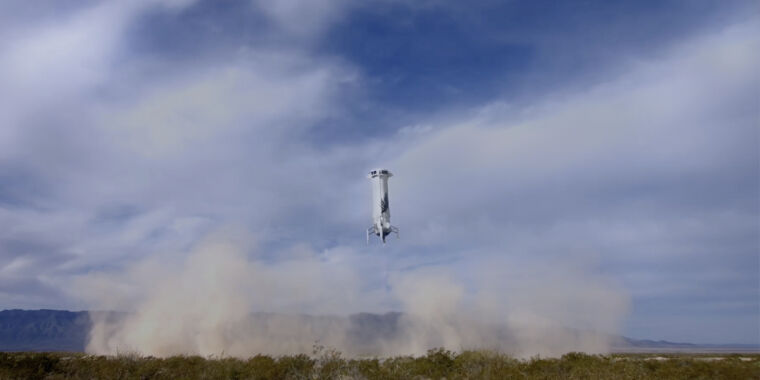Blue Origins suborbital rocket flies for first time in 15 months Ars Technica | Makemetechie.com Summary

News Summary
- Last year's launch failure left Blue Origin with just one New Shepard booster in its inventory—the rocket that made its ninth flight to space on Tuesday.Before Tuesday's uncrewed flight, this particular booster has been exclusively used for crewed missions..
- In March, when Blue Origin announced the results of its investigation into last year's launch failure, the company said it would return to flight "soon" with New Shepard..
- The engine operated at higher temperatures than expected, leading to thermal damage to the nozzle, Blue Origin announced earlier this year.Blue Origin said corrective actions to address the cause of the failure included design changes to the engine combustion chamber and adjustments to operating parameters..
- Nine months later, New Shepard finally flew again.Engineers probing the New Shepard accident last year concluded a nozzle failure on the rocket's BE-3PM was the direct cause of the launch failure..
- "Following a thorough review of today’s mission, we look forward to flying our next crewed flight soon," said Erika Wagner, a longtime Blue Origin manager who co-hosted the company's webcast of Tuesday's flight.But "soon" is a conveniently vague term..
- Engineers also redesigned parts of the nozzle to help it better handle thermal and dynamic loads, the company said.In September, the Federal Aviation Administration closed its investigation into the New Shepard launch failure, and Blue Origin targeted an uncrewed return-to-flight mission in early October..
Enlarge/ Blue Origins New Shepard booster comes in for landing in West Texas at the conclusion of Tuesdays suborbital flight.40With redesigned engine components, Blue Origins New Shepard rocke [+5546 chars]

:max_bytes(150000):strip_icc():focal(749x0:751x2)/the-voice-finalists-12192355-0f6157cc3c1041c49ef72a3fe2f34e49.jpg)









:max_bytes(150000):strip_icc()/charmed-121923-c38f40c439ce45ac93b6f5e09340e0c1.jpg)


 Never miss a story from us, subscribe to our newsletter
Never miss a story from us, subscribe to our newsletter